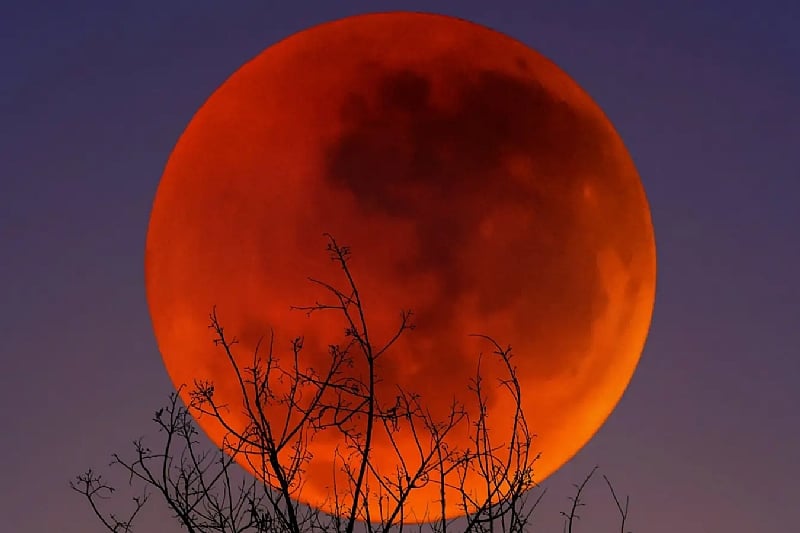The recent appearance of a blood moon over Ho, the Volta Regional capital of Ghana, on Sunday, September 7, 2025, captivated residents and sparked a diverse range of interpretations rooted in religious beliefs, cultural traditions, and scientific understanding. The celestial event, characterized by the moon’s deep red hue, is scientifically known as a total lunar eclipse, but its striking visual impact led to a variety of perspectives on its significance. While some viewed it as a divine omen, others emphasized the purely scientific explanation, highlighting the ongoing interplay between traditional beliefs and modern scientific knowledge in understanding natural phenomena.
Within the religious community, interpretations of the blood moon varied. Reverend Michael Adzomani, a local clergyman, viewed the event through a prophetic lens, citing biblical passages that describe the moon turning to blood as a precursor to significant events. He interpreted the blood moon as a divine call for repentance and reflection, referencing Joel 2:31, which speaks of the sun turning into darkness and the moon into blood before the coming of the Lord’s day. This interpretation reflects a broader apocalyptic vision within certain religious traditions, associating celestial events with divine judgment and warnings.
In contrast to the religious interpretations, scientific voices emerged to explain the phenomenon in natural terms. Torgbui Satsi III, a former science educator, emphasized the predictability of the blood moon as an astronomical event, explaining that it occurs when the Earth passes between the sun and the moon. He reassured the public that the event was a natural occurrence, readily explained by scientific principles, and not a cause for alarm. He emphasized the pre-determined nature of the eclipse, highlighting that scientists had accurately predicted its occurrence well in advance. This perspective underscores the role of scientific understanding in dispelling superstitious fears and providing rational explanations for natural phenomena.
Reinforcing the scientific explanation, Rev. Fr. Dr. Isaac Benuyenah, a Roman Catholic priest, concurred that the reddish glow of the blood moon is a consequence of sunlight being refracted through the Earth’s atmosphere, casting a shadow on the moon. He dismissed the mystical attributions associated with the phenomenon, emphasizing that science has debunked such interpretations. Furthermore, he addressed specific myths, such as the belief that pregnant women observing the blood moon risk harm to their unborn children, stating unequivocally that these claims are unfounded. His perspective demonstrates how scientific knowledge can challenge and correct potentially harmful misconceptions associated with natural events.
Beyond the religious and scientific interpretations, the blood moon served as a captivating spectacle for many residents of Ho. It sparked awe and curiosity, prompting reflection on the vastness and mysteries of the universe. The event also stimulated interest in astronomy, encouraging people to learn more about the celestial mechanics that govern such phenomena. This underscores the power of natural events to capture human imagination and inspire a deeper appreciation for the wonders of the cosmos.
In essence, the blood moon over Ho provided a microcosm of the ongoing dialogue between faith, tradition, and scientific understanding. While some interpreted the event through the lens of religious prophecy and divine warnings, others emphasized the well-established scientific explanations for the phenomenon. Ultimately, the event served as a moment of wonder and learning for many, fostering a sense of awe and inspiring further exploration of the universe. This demonstrates the diverse ways in which humans engage with natural phenomena, drawing upon a range of interpretative frameworks to understand and make sense of the world around them.


